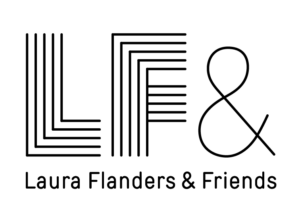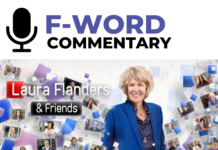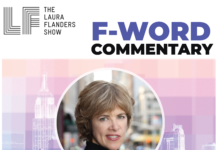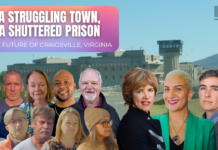The right wing has found its newest racist wedge issue: Critical Race Theory. This decades-old movement in legal scholarship has suddenly become a talking point for GOP activists, and a widely misused term in mainstream media. The topic is bringing tension to school board meetings across the country ahead of elections and putting educators under scrutiny for even mentioning white supremacy in their classrooms. As of filming, 6 states have passed laws that stem from the furor and numerous teachers have been fired. And yet the people doing most of the talking on Critical Race Theory are not the lawyers and scholars who invented the term, or anyone who seems to know much about it. So what is Critical Race Theory actually? Why are some people so obsessed with it? And how could journalists and the media companies they work for do a better job of correcting all the disinformation? To answer those questions, Laura speaks with UCLA and Columbia Law Professor Kimberlé Crenshaw, broadcast journalist and producer Soledad O’Brien, and Kyle Simox, a young man who is organizing to support his former high school teacher who was allegedly fired as part of the push to ban Critical Race Theory in Tennessee public schools.
Guests
- Professor Kimberlé Crenshaw, Co-Founder & Executive Director, The African American Policy Forum, Professor, UCLA Law School & Columbia Law School
- Soledad O’Brien, CEO, Soledad O’Brien Productions, Host, Matter of Fact with Soledad O’Brien
- Kyle Simcox, Former Student of Matthew Hawn, Organizer of Sullivan Central Stands with Coach Hawn in Blountville, TN
To listen to the uncut interviews, and to get episode notes for this episode and more, become a Patreon partner here.
Watch this week’s live talk-back with guests Kyle Simcox and Kyla Jenée Lacey. “White Privilege“, a poem written and performed by Lacey, was used as a pretext for the dismissal of Matthew Hawn. Simcox, Coach Hawn’s former student, tells us where the case stands today. Join us on YouTube for a live viewing event and chat with Laura and guests Sundays, starting at 11:30am ET.
Prefer to Listen?
Transcript
THE LAURA FLANDERS SHOW
KIMBERLÉ CRENSHAW & SOLEDAD O’BRIEN CALL OUT THE MEDIA ON CRITICAL RACE THEORY
LAURA FLANDERS: The right have found their latest racist, wedge issue, critical race theory. The simple idea that the law is not race neutral has suddenly become a mainstream talking point for GOP activists and the media. As of filming, six states have passed laws that stem from the furor, school board meetings are heating up and teachers have even been fired. Needless to say, most of the people doing most of the talking about critical race theory are not the lawyers and scholars who invented the term or anyone who seems to know much about it, but like allegations of political correctness before it, and the great stolen election hoax now, the manufactured furor over critical race theory is sowing real division and affecting real people’s lives. So what is critical race theory? In fact, why are some people so obsessed with it? Who stands to gain and how can journalists do a better job of stopping the spread of lies? Coming up, I’ll talk with former CNN anchor and host, Soledad O’Brien, she minces no words in talking about the media’s role in all this. And we meet a young man in Tennessee, who is organizing to support his former high school teacher. A man who was fired after 16 years in all this push to ban critical race theory. Finally, in my closing, I will remind you of something the founder of the Christian Coalition said about schools and school boards and presidents. That’s all coming up but first, UCLA and Columbia Law professor, Kimberle Williams Crenshaw was actually at the birth of critical race theory. She’s the founder and director of the African American Policy Forum and she’s next.
So take us back there. It almost goes back to when we first met, the late ’80s, you were with a group of people talking about this, professors mostly. And you authored a Harvard Law Review piece. That in some quarters is called the kind of manifesto of critical race theory. Can you talk about the conditions of that time and what gave rise to this work?
KIMBERLÉ CRENSHAW: We were, Laura, part of what I consider the second generation of civil rights activists and students. We occupied the institutions after the sort of formal segregationist period was deemed to be over. Many of us had gone to Harvard Law School to study with Derrick Bell, author of the famous, “Race, Racism and American Law” only to find that he had left and that there were no plans to teach his course. So, our goal was to seek the kind of education that would allow us to be helpful in the ongoing struggle for racial justice, the ongoing struggle to dismantle the consequences of white supremacy. And there we learn, not only that this elite institution was completely disinterested in educating us to fulfill those roles, we also learned that the thinking about the relationship between race and law was dramatically underdeveloped. So critical race theory grew out of this second generation civil rights formation, looking at how race and racism wasn’t just, an issue that the law sometimes came in and tried to provide remedies against, the law was often the thing that created the very problem that it was then purporting to solve. You know the very idea that race is a natural category is a false idea, race is what we call socially constructed. Namely, race is a product of laws, of practices, of institutions. And law itself actually help constitute what race means. Law made the fiction of race, materially real. So when these critics of critical race theory say that we are the ones that believe in race essentialism, it is evident that they have no idea what they’re talking about or if they do, they don’t mind lying about what our project really is.
LAURA FLANDERS: I mean, I have to point out that when Florida Governor, Ron DeSantis refers to his own standing up in favor of educational viewpoint diversity and against what he described as a stale ideology, he’s referring to something that is relatively new, that was quite controversial at the time. Has he been around long enough to be stale? And although you’ve been very expansive here, it’s not generally the stuff of K through 12 education.
KIMBERLÉ CRENSHAW: Yeah, I mean, you know. If I had my book with me, I would hold it up and I’d say, “Do people really think that this big red book is being taught to second graders?” It’s a ridiculous claim, but you know, they are not bound to the truth in any way. In fact, one of the main agitators has said he doesn’t give a expletive about what critical race theory really is. What they realize is that this is a container into which they can pour all of their anxieties, all of their anger, to distract and deflect from the fact that there really is no agenda that the Republicans have other than holding onto power and trying to make it permanent. And they’re doing it in a classic way. They’re suffocating democracy and they’re saying, “Hey, look over there, critical race theory.” And unfortunately, too many people are falling in line. I think Laura, it can’t be surprising that the base is easily mobilized in this way. What is surprising, and I think it is something that we really have to talk about is what are the conditions of possibility, such that this attack has happened in, in a way that, the other side is completely unprepared to respond to.
LAURA FLANDERS: Why is the fight over school curriculum and funding and teaching so important to the right?
KIMBERLÉ CRENSHAW: Public education remains the most significant public institution that shapes how Americans think about the country, think about its history, think about its future. Brown vs. Board of Education said it clearly, the reason why integration was so important is that education is the key to preparing people to participate in what we want to call ourselves to be a democracy. I think there is some agreement about that from left to right. Another way of putting it is, there’s agreement about the idea that the truth will set you free. Where we decide is that our side wants to teach the truth and the other side doesn’t. So this is a classic move, the right creates the story, often by lies and disinformation, they then are able to mobilize outrage around the lie. And then when mainstream media come along, they just report the controversy rather than how the controversy itself was produced. So we know it now, we’ve seen it. We’ve seen it now play out in six months. My hope is that since we’ve seen it so many times before, we’re not gonna do the okey-doke this time. We’re gonna say, we’re not gonna let you define what critical race theory is any way you want so that we all go jump ship. We’re not gonna let you poison what beauty is being produced in our citizenry by people demanding to know more. We know truth will set us free, and we are determined to create the classrooms and the information that our citizens need to actually be able to fully participate in this democracy.
LAURA FLANDERS: I mean, how does it feel to be under attack like this? And what’s helpful?
KIMBERLÉ CRENSHAW: No academic ones to see their life’s work being thrown around like a political football with no sense that one has to engage the ideas on their own. Nobody wants that to happen. And yet, I have to also say that nothing creates more demand to understand an idea than officials saying that the ideas have to be banned.
LAURA FLANDERS: So bring it on?
KIMBERLÉ CRENSHAW: Yeah. There is that, the good news is more people have heard of critical race theory in the last six weeks than heard about it over the last 30 years! So that’s the good news. The bad news is they were introduced to it by the right. And so the negatives are high. Our goal is to come along and say, you wanna know what critical race theory is, let talk about critical race theory in practice. Let’s talk about critical thinking about race that’s happening in your children’s classroom. And if it’s not happening, let’s talk about why it needs to happen. So, when you say, “What helps?” What helps is first of all, media not asking us to eat from a table that has been set by the right. And that’s what’s been happening for the last several weeks. What is it about you guys that they don’t like? What is this critical race theory rather than, what is it that is motivating the right to pour all their grievances into this flame? Who’s behind this? Where’s the money? What’s the end game? And I think the other thing that is incredibly helpful is when teachers and students and parents start telling their stories about what is happening in classrooms that open the eyes that allow us to understand our history for what it is to imagine different futures. It’s helpful to tell the stories about, you know what, I knew nothing about the Tulsa massacre. And I went to a high school in Tulsa. What is that telling us about the intention to bury our history? So let’s step out with the stories of what real education looks like. And let’s also, honestly, let’s tell the truth about what happens in classrooms in which anti-racism is not a value. We’re hearing all of these stories, most of them unverifiable, about terrible things that are supposedly happening as an expression of critical race theory. But all of us who’ve been through American classrooms know on a day-to-day basis, some of the racist things that happen in classrooms. So let’s talk about all of it. Let’s give Americans a picture of what’s really happening and then let’s have a fight about what should happen.
LAURA FLANDERS: You have been moving our debate in many directions over many years. As always, a joy to talk with you about this, even though it’s so frustrating. Maybe we are making a little bit of progress.
KIMBERLÉ CRENSHAW: It’s such a pleasure, Laura.
LAURA FLANDERS: Now we go to Soledad O’Brien, former CNN host. She’s been fighting disinformation in the media for years and recently testified in Congress before the House subcommittee on disinformation and extremism. Soledad O’Brien, thank you so much for joining us. You have seen this kind of scenario before, lay it out for us. How did critical race theory or the furor over it become a news story and in so many ways a news event?
SOLEDAD O’BRIEN: Yeah, it doesn’t happen unless the news media decides to give an assist and in some ways play the both sides game. And you’ll remember, I think one of the very first people who wrote about it, well, it was Peter Baker in the New York Times. And the headline of his piece was, Trump more than ever casts himself as the defender of White America. And he’s talking about Donald Trump’s memo, which essentially says that he’s gonna ban racial sensitivity training. And he, the quote is this, “Divisive, false, demeaning propaganda of the critical race theory movement.” So conflating those two things, Peter Baker of the New York Times could have said, those are not the same thing. He could have told people, well, what is critical race theory? He chose not to do that. In fact, the failures, I think with that very first piece back in September of 2020, were in not defining what critical race theory is, it’s obviously very complicated, no better place to do it than in the pages of the New York Times. He took President Donald Trump’s, a very well known and recorded liar, his point of view and his definition, and used that definition. And then of course others went on to quote the New York Times, et cetera, et cetera. So I think you start there with a pretty good example of a fail. And I think the media has repeated that fail over and over and over again.
LAURA FLANDERS: Can you talk a little bit about the pressures that might be on journalists to cover what looks like a story, the sort of outlandish statements that people make. They will always say, as they did throughout the Trump administration, “Well it was news.” What do you say back to them?
SOLEDAD O’BRIEN: I think it’s a lot about ratings. I think even those people, Chuck Todd is a good example, I think his words were, it’s a faux controversy. So he’s saying this thing is fake while he has the person on his show who’s talking about concerned parents and a grassroot effort, but he’s giving him his platform while he is telling us that it’s fake. Now, I think sometimes people get confused. Chuck Todd doesn’t have to have anybody on. He could talk about it being fake without giving a platform to a person who is making stuff up.
LAURA FLANDERS: So who benefits? Who is benefiting from this drama and how do we move beyond it? Do we just abandon the territory of critical race theory and as you say, rebrand, try to talk about something else?
SOLEDAD O’BRIEN: Listen, slavery happened, it’s a fact, Jim Crow happened, it’s a fact. There are many, many facts in history that we should be talking about. None of those things are critical race theory, which again only happens at a very high level debate and discussion when you’re talking about intersectionality and the law and race. So we’ve turned, we, in the media generally, the media has turned something that does not exist, is not being taught in anybody’s kids school, is not happening as if it’s an actual debate that’s unfolding right now.
LAURA FLANDERS: Are you happy to be out of CNN at this point? Would it be difficult for you to be making these points if you were still there?
SOLEDAD O’BRIEN: My husband always likes to say, “Oh my gosh, if you worked there, you’d have to quit.” He says it consistently. I don’t think I could be as critical as I am of the media and platforming liars and giving a space to misinformation and disinformation. And do that and overtly call it out consistently. I just couldn’t do that. So, yes, I’m glad that I’m not in any news organization where you have to lay that out for people. I think it becomes problematic. And I think it’s why you see the news media so reluctant, mainstream news media, to call themselves out. To say, I mean, Peter Baker could write an essay on what he got wrong. He was early in it, he could’ve said, “Here’s what I did wrong.” ‘Cause I could tell him what he did wrong. It’s not gonna happen. It’s just not gonna happen. And even when you would do that and make a correction, as you know, it doesn’t have the impact of the initial article or piece, et cetera, et cetera.
LAURA FLANDERS: So it might seem obvious Soledad. But do you think any of this that we’ve been talking about has any relationship to the decline in trust we’re seeing amongst the public when it comes to journalists and journalists?
SOLEDAD O’BRIEN: There’s no question. The trust in media numbers are very, very low. I think that’s hugely problematic and it is a vicious cycle. Someone asked me once, “So how do you fix that?” I think my analogy was, it’s like a cheating boyfriend, where you just have to be trustworthy. You can’t talk about being trustworthy, you can’t say we’re going to do better. You actually have to do the work of doing better. You could slow down, you could help your viewers to understand the issues and not cover a debate that is not a real debate. “That’s ginned up,” to quote Chuck Todd. And so it destroys the debate about what we do value in this country and how we are going to work together for our democracy.
LAURA FLANDERS: Host of “Matter of Fact with Soledad O’Brien”, Soledad, thank you so much for joining us. It has been a pleasure talking with you about this, truly.
SOLEDAD O’BRIEN: My pleasure.
LAURA FLANDERS: Ginned up as the controversy over critical race theory, maybe, it has already born real consequences for teachers and students around the country. We go now to Blountville, Tennessee, where the local school board recently voted to fire Matthew Hawn, a local high school teacher who taught a class on contemporary issues. I spoke with his former student, Kyle Simcox, who’s right now leading a movement to support his former Coach Hawn. You were a student of Matthew Hawn known as Coach Hawn. He was there for 16 years at Sullivan County Central High School. Who was he to you, what did he teach and what’s happened?
KYLE SIMCOX: Coach Hawn was a teacher, a mentor, but most of all, a friend. He was somebody that you could always go to him. You can always confide in him. You always knew that you had somebody who cared. And that’s what he meant to me. He was a really, really good friend to me. He really cared for me and everybody at that school, he taught personal finance, economics. He taught contemporary issues. He was a pitching coach for the school and he had been there for 16 years so he was a very tenured teacher there at Sullivan Central High School.
LAURA FLANDERS: The school board, your local school board recently voted to proceed with firing Coach Hawn, on what grounds?
KYLE SIMCOX: They say that it has nothing to do with critical race theory, but they’re basing it on the grounds that he showed videos and published articles in his class that were inappropriate and contain some harsh language. And so that’s what they’re basing their dismissal off of.
LAURA FLANDERS: What do you make of that?
KYLE SIMCOX: I say that’s total baloney If you ask me. I think that we all know that they’re doing this out of fear, repercussions from the state for having a teacher who had taught critical race theory and is very open about teaching critical race theory and a teacher who teaches about white privilege and white supremacy and I think that they, they don’t want that in their school system and that they want that gone and they want to, as you could say, whitewash him out of the system.
LAURA FLANDERS: Now we’ve spoken to Kimberle Crenshaw, the professor who’s credited with coining the term critical race theory. She will say, look, this is a very esoteric field of legal study. Which is mostly not taught in high schools, but it is also a way of looking at the law and at of American society, a kind of lens. When you think of critical race theory, which are you referring to and what was coach Hawn teaching?
KYLE SIMCOX: As he said in his defense during his first hearing, he said, “My students know one side, I’m here to show them another side. They already know the side of racism and hate, they grow up in that they know what that is. I’m here to show them a different side.” Me and Coach Hawn would argue and argue and argue but at the end of the day, I would think back and you know maybe, maybe he was right about something. Maybe I should go talk to him a little bit more the next day in class, we would continue the discussion and he would continue to show me a different side of things that I didn’t really know. It just really developed me more as a man, and so I’m really thankful, so thankful for Coach Hawn.
LAURA FLANDERS: What do you think is really at stake here? Why this fight right now?
KYLE SIMCOX: A big thing that’s going on in the county right now is there’s a new school about to open. We’re actually gonna be closing three of the four county schools, Sullivan North, Sullivan South and Sullivan Central and they will all be combined into a brand new state-of-the-art, West Ridge High School. And I think that the county is trying to make sure that they cover all their bases and they get rid of anybody that might pose a threat to them. Whenever it comes to teaching critical race theory, that’s something now in the state of Tennessee, you cannot do. And if you’re caught doing that, your school will actually lose state funding. And so, whenever they made this new school, they had promised all the teachers that everybody would still have a job at the new school. And, now, that’s not true they’re getting rid of Coach Hawn just because he taught love over hate.
LAURA FLANDERS: This furor is affecting school boards and communities all across the country, well beyond the career of any individual, how is it affecting Blountville? How is it affecting Sullivan county in Tennessee?
KYLE SIMCOX: It is affecting Blountville and Sullivan county and the whole state of Tennessee by reversing the hands of time. You look at what Martin Luther King Jr. went through, what Congressman John Lewis went through, the Freedom Riders and the marches and the beatings and the arrests that they had and, they did it all in the name of civil rights. And they got so much done. And it wasn’t that long ago where we actually had KKK rallies and the Sons of the Confederacy rallies in our hometown back 20 years ago. And it is my fear that we are reverting back to a time where those people will feel comfortable coming back out and gathering. There’s a lot of work to be done and if we keep on, keep on trucking and as John Lewis would say, we’re gonna start some good trouble. So that’s what we’re gonna try to do.
LAURA FLANDERS: You think you might ever yourself consider running for school board?
KYLE SIMCOX: I don’t know. Nowadays I’m busy working. My family runs an electrical contracting business and so that’s what I’ve been doing. But public office is definitely something that I would like to do somewhere way down the line.
LAURA FLANDERS: This certainly draws attention to why those school boards matter.
KYLE SIMCOX: Absolutely, that’s something that we’re trying to emphasize in our Facebook group, that people can go and sit in on the school board meetings. They’re not private, they’re for the public, anybody can go and see these school board meetings. Anybody can go see a city council meeting. Anybody can go to these public events that will impact your community and so, that’s the point that we’re trying to get out right now, that these people aren’t there forever. It’s up to the community to decide whether they’re there and how long they stay and when they need to leave, who replaces them.
LAURA FLANDERS: Kyle Simcox, thank you so much. 2018 graduate of Sullivan County Central High School there in Blountville, Tennessee. Appreciate you joining us.
The so-called war on critical race theory is a repeat of old anti-democratic tactics. I remember Ralph Reed, then of the Christian Coalition saying he’d rather have a thousand members of the school board on his side than one president and no power at the base. How do you keep a minority in office, in a democracy? Well Ralph Reed knew how. You use fear to excite the base. You win local power, then you gerrymander, redistrict, and now you’re controlling the state. At the national level, all you gotta do is keep people distracted and progressives will never get done what they were elected to do. People get frustrated and there you have it, a trifecta. There’s just one defense for progressives, not to buy into this stuff and to keep focused on what they actually have as their priorities in this moment. So that’s my message today. Thanks for joining me. I’m Laura Flanders for “The Laura Flanders Show”. Till the next time, stay kind, stay curious, stay critical and thanks.
For more on this episode and other forward thinking content and to tune into our podcast, visit our website at LauraFlanders.org and follow us on social media @TheLFshow
Want More Art & Media Coverage?
You can find more LF Show coverage here.
Accessibility
The Laura Flanders Show is committed to making our programming, website and social media as accessible as possible to everyone, including those with visual, hearing, cognitive and motor impairments. We’re constantly working towards improving the accessibility of our content to ensure we provide equal access to all. If you would like to request accessibility-related assistance, report any accessibility problems, or request any information in accessible alternative formats, please contact us.
















